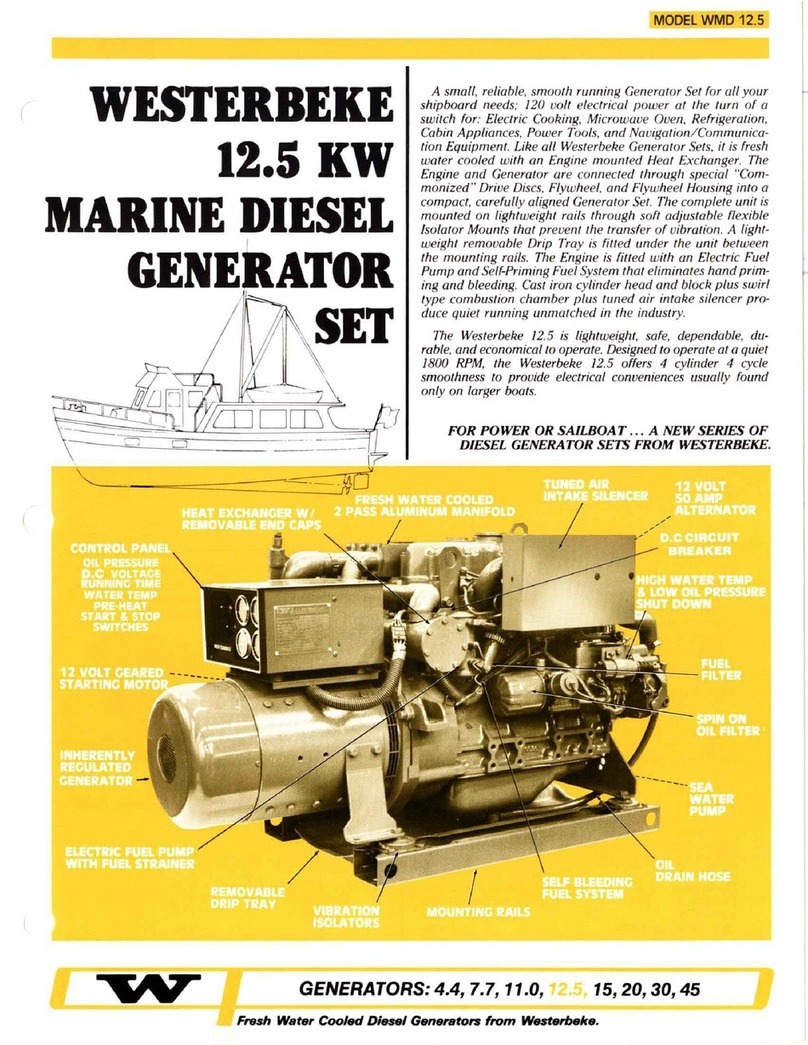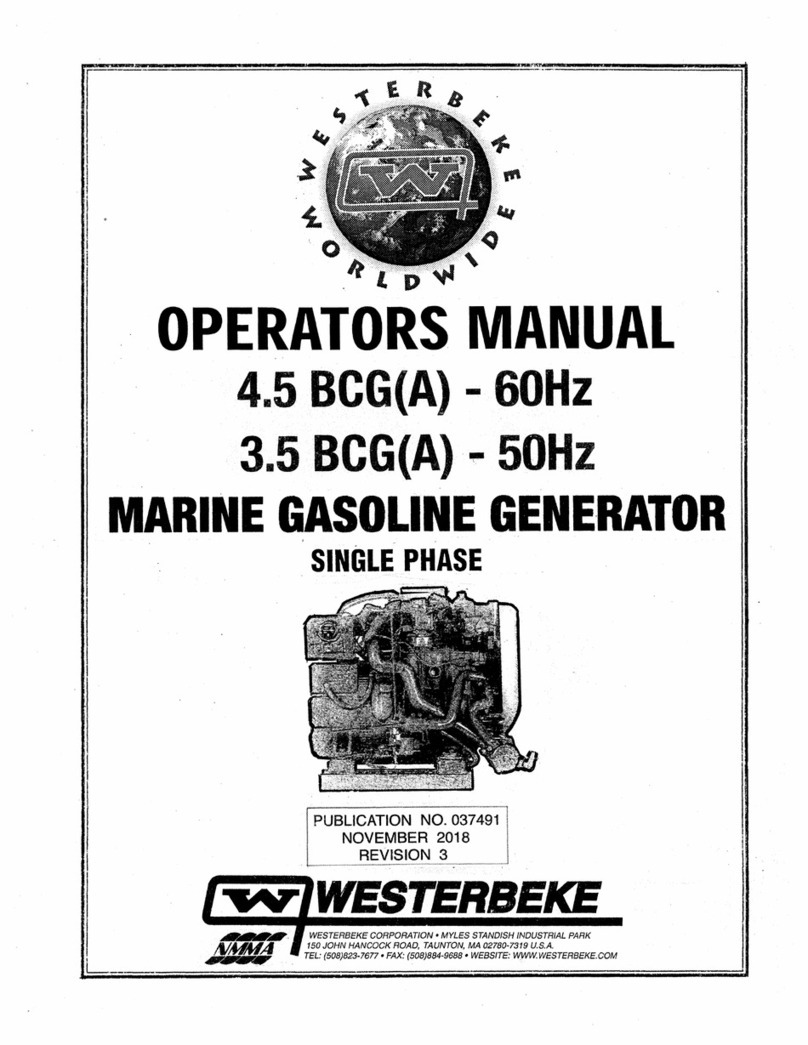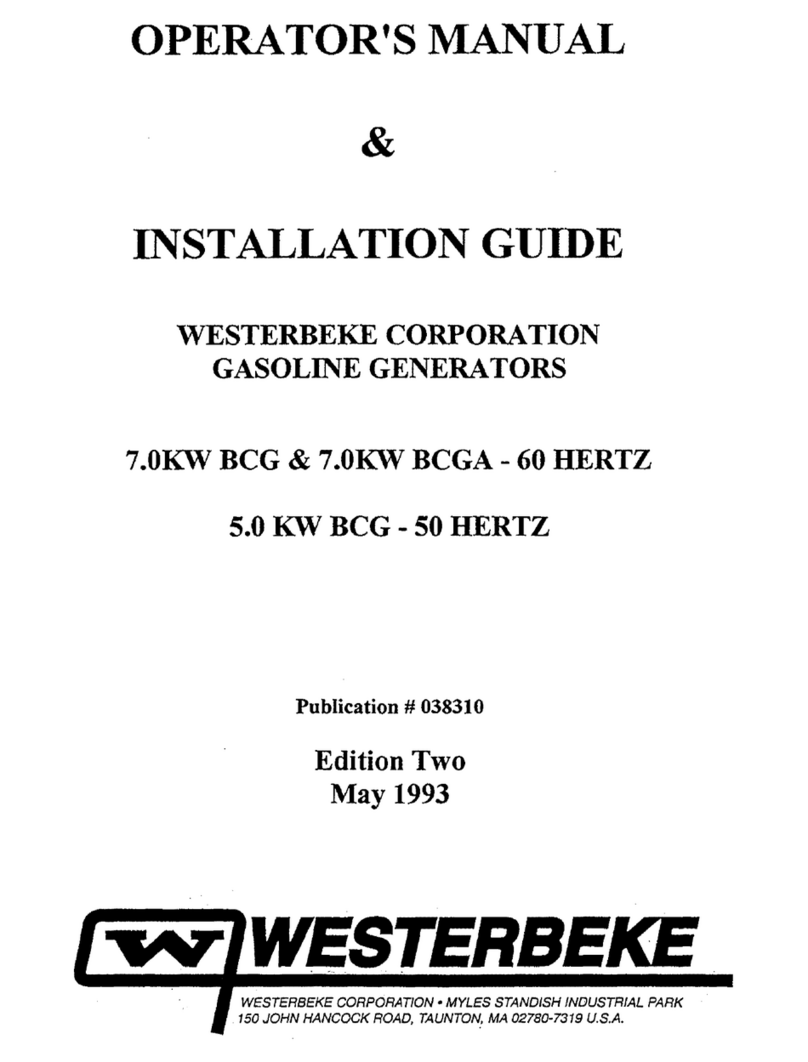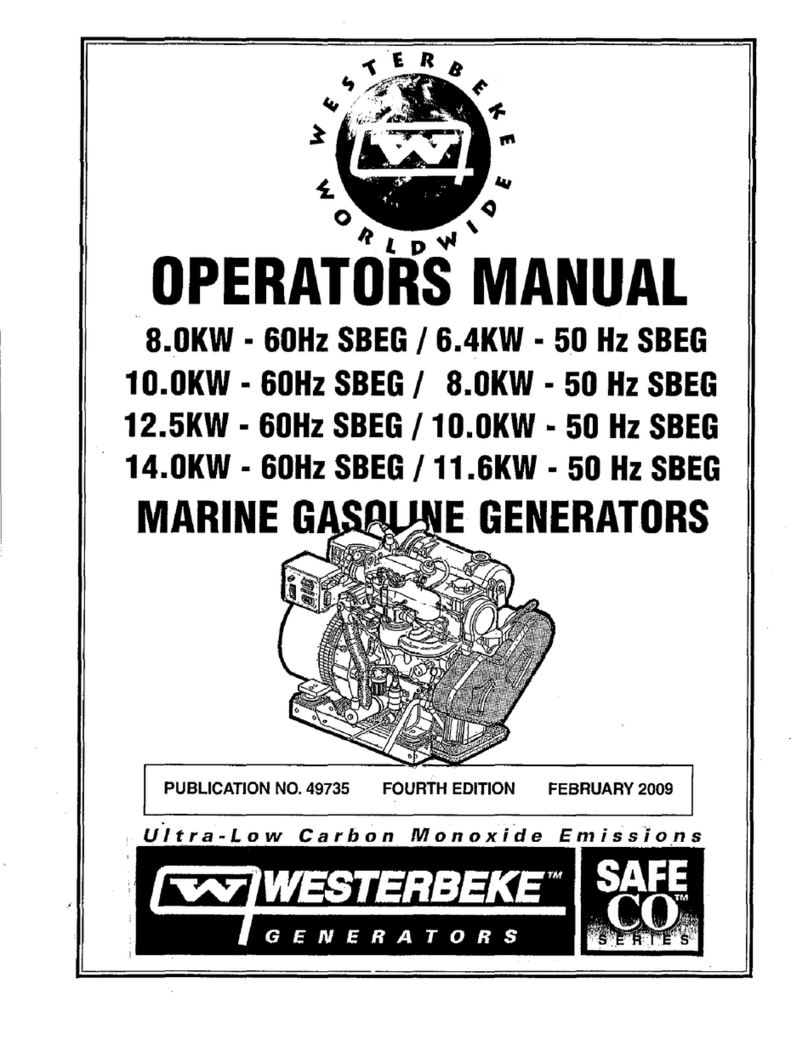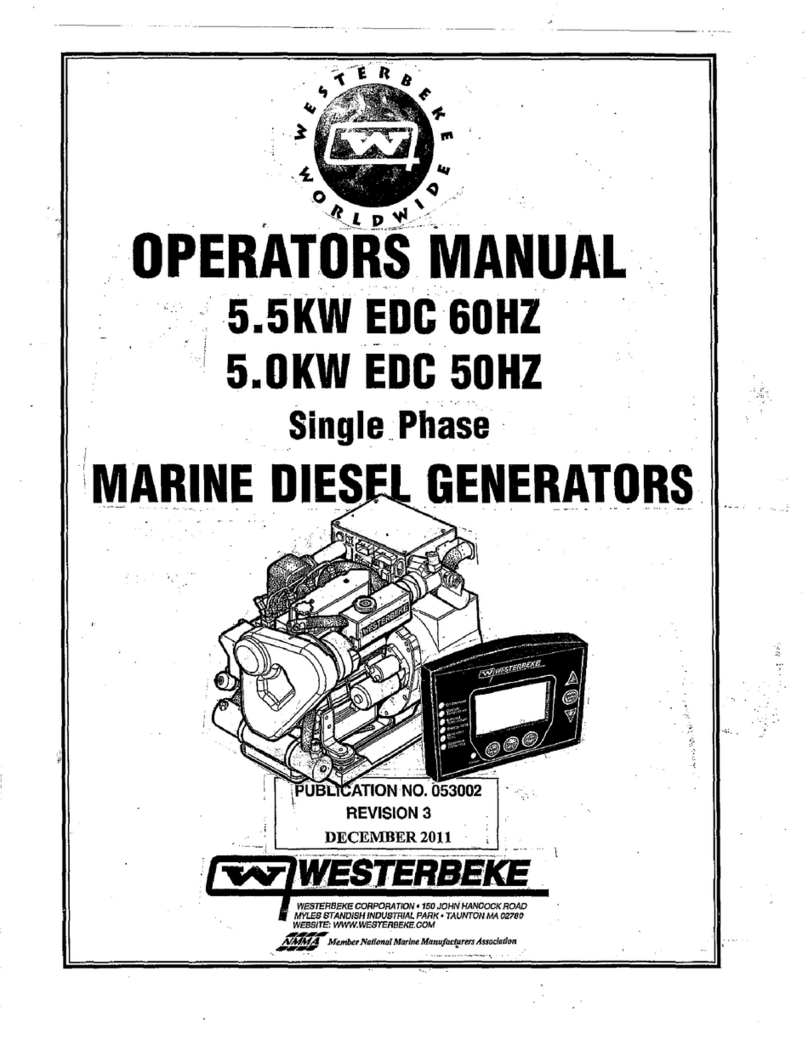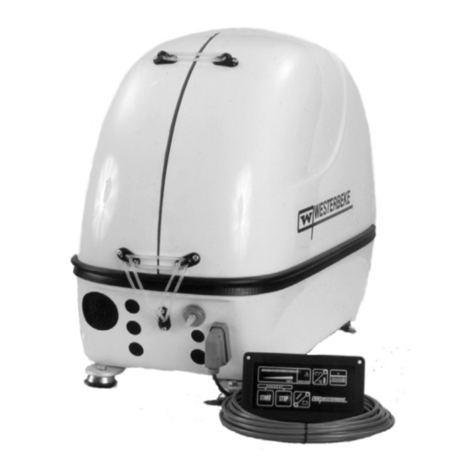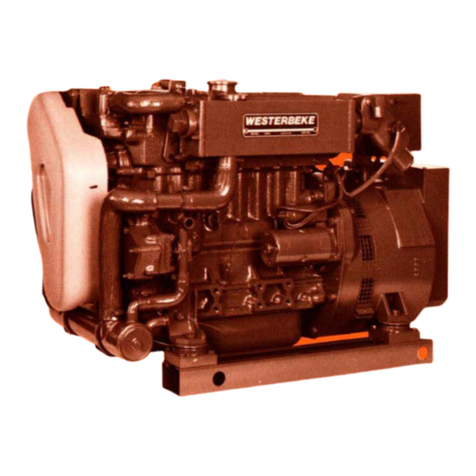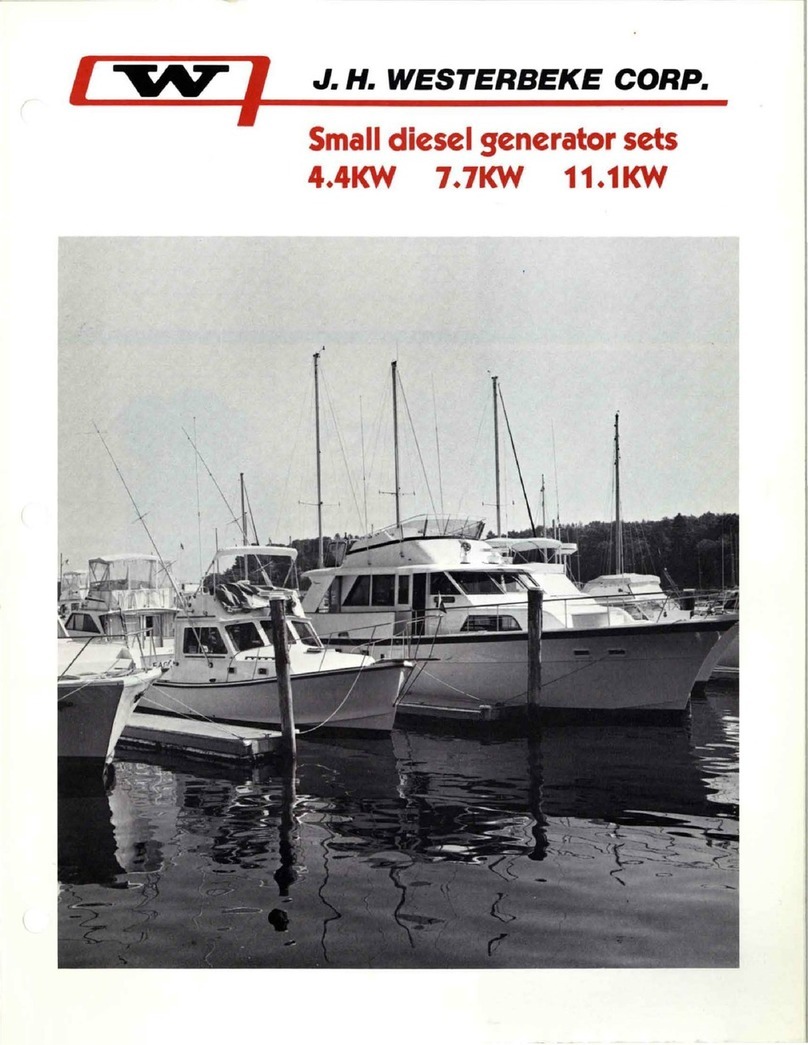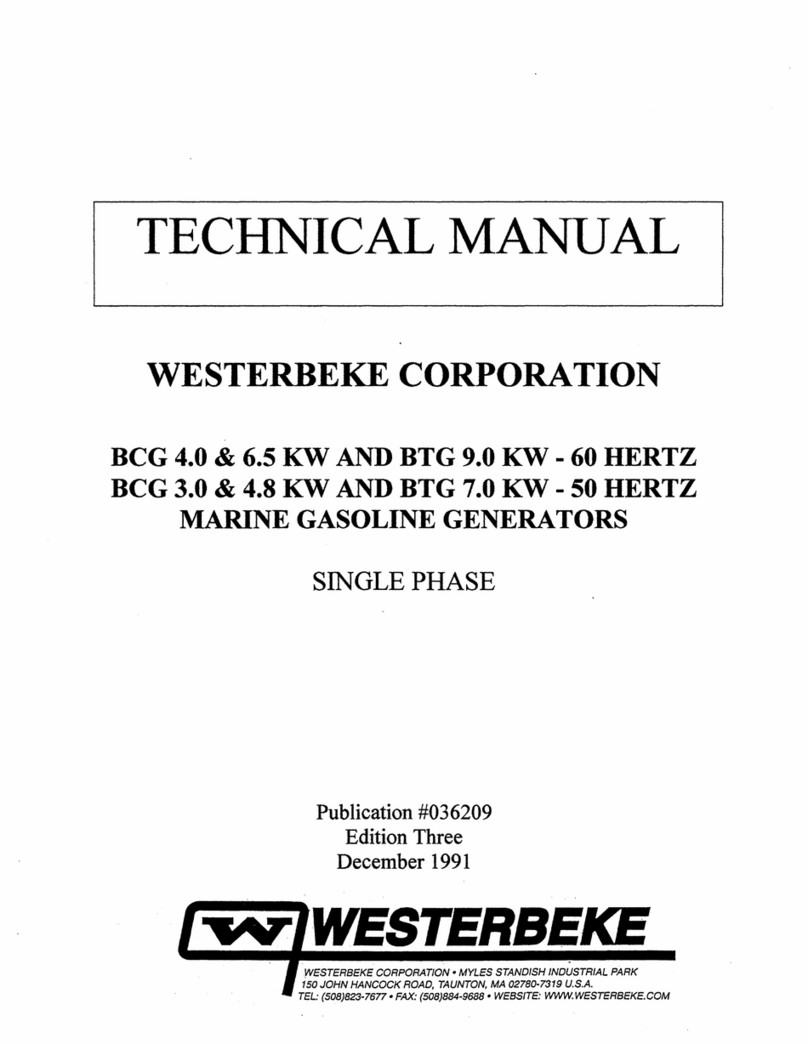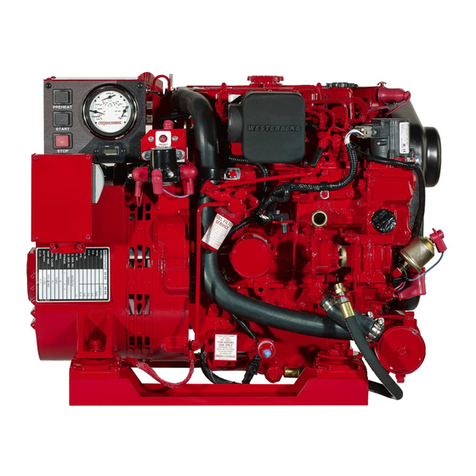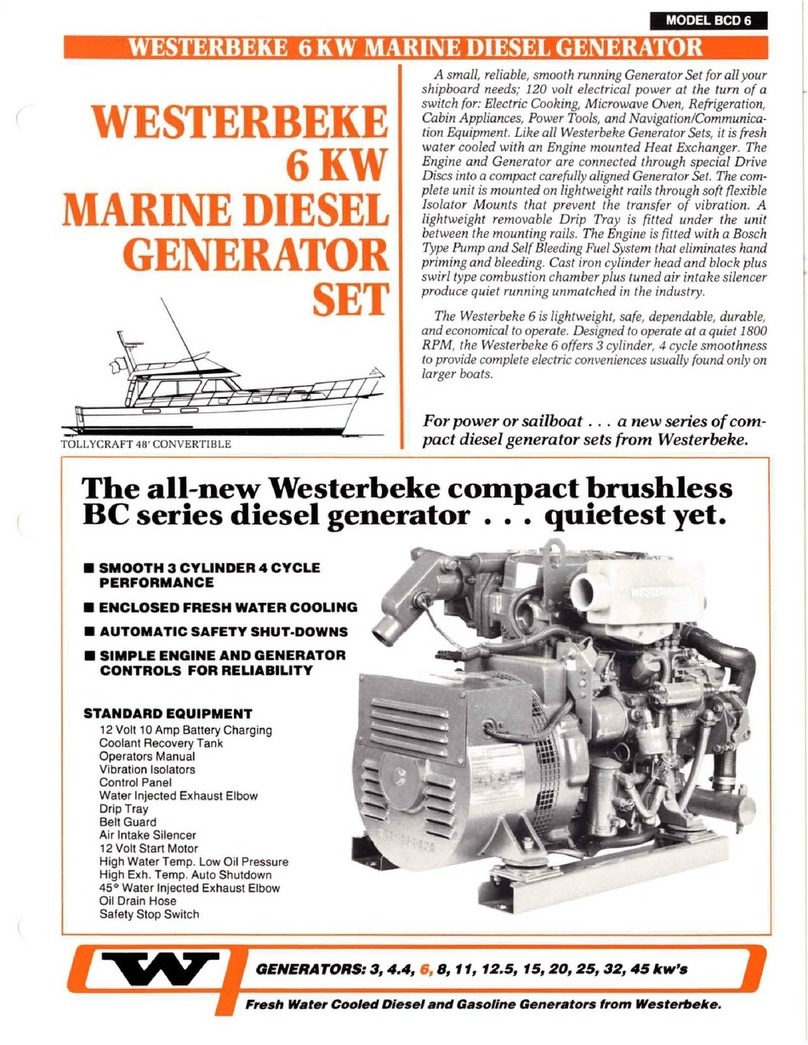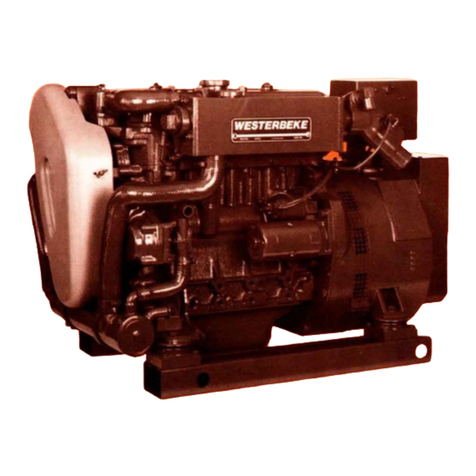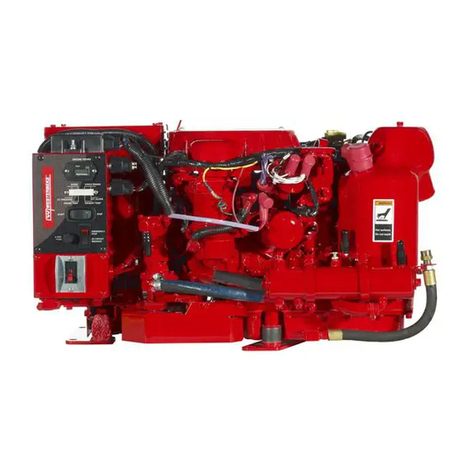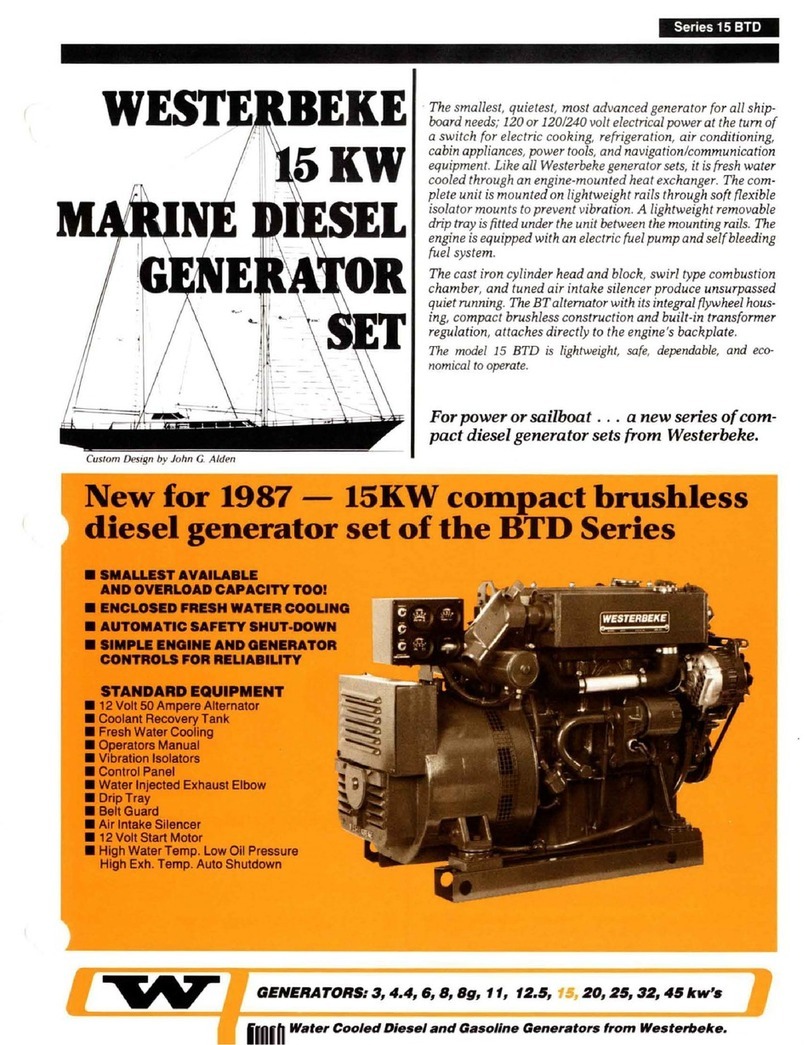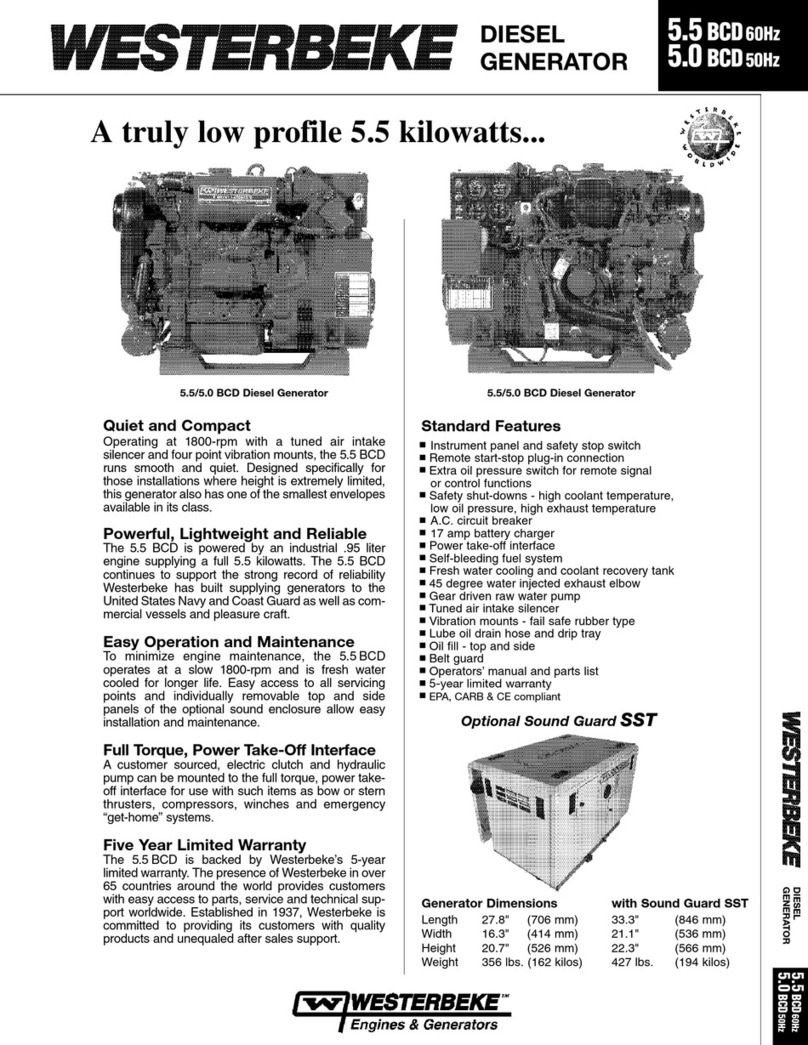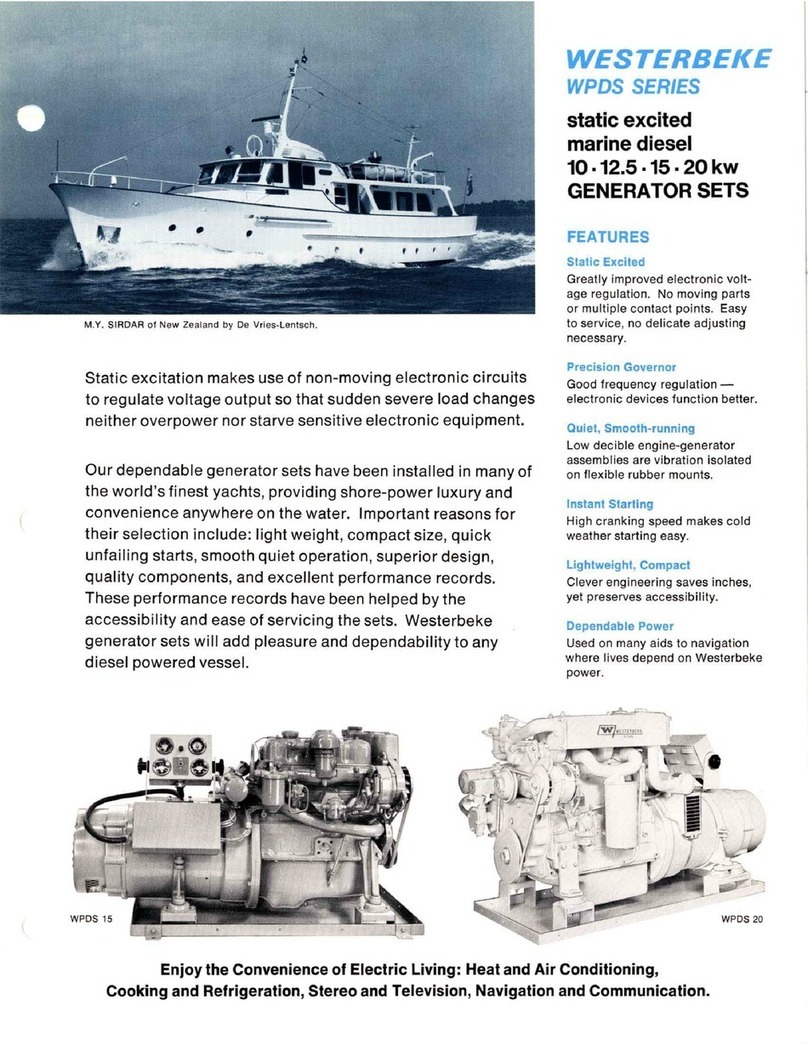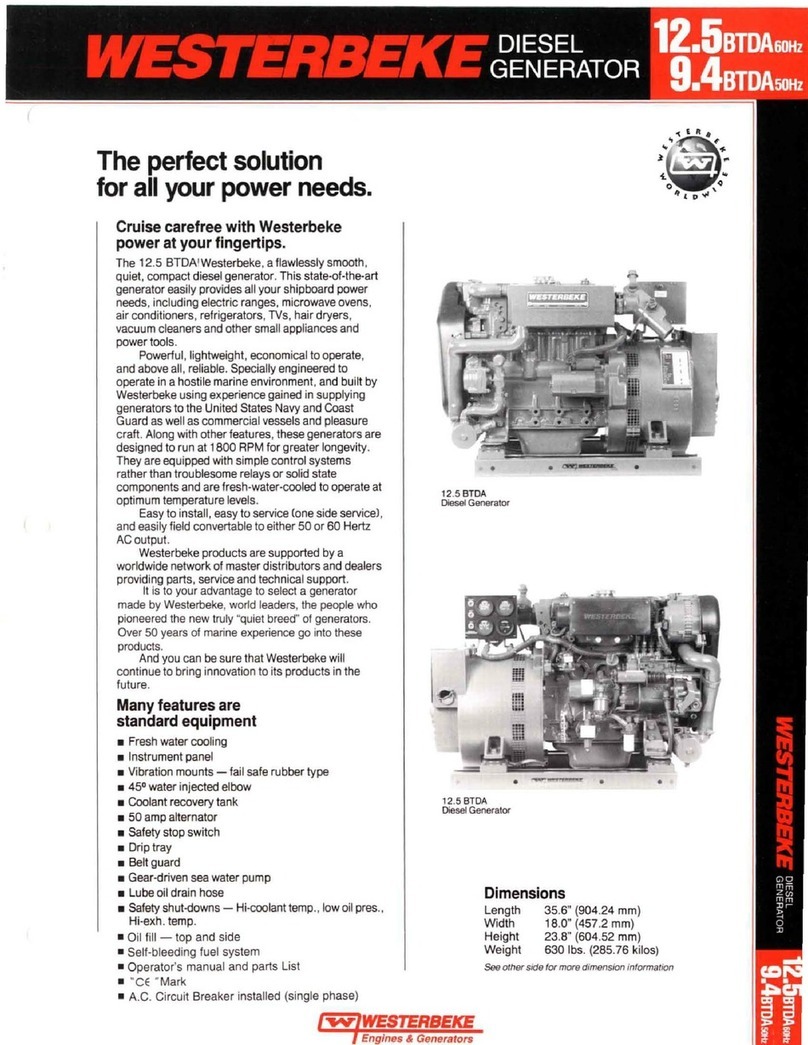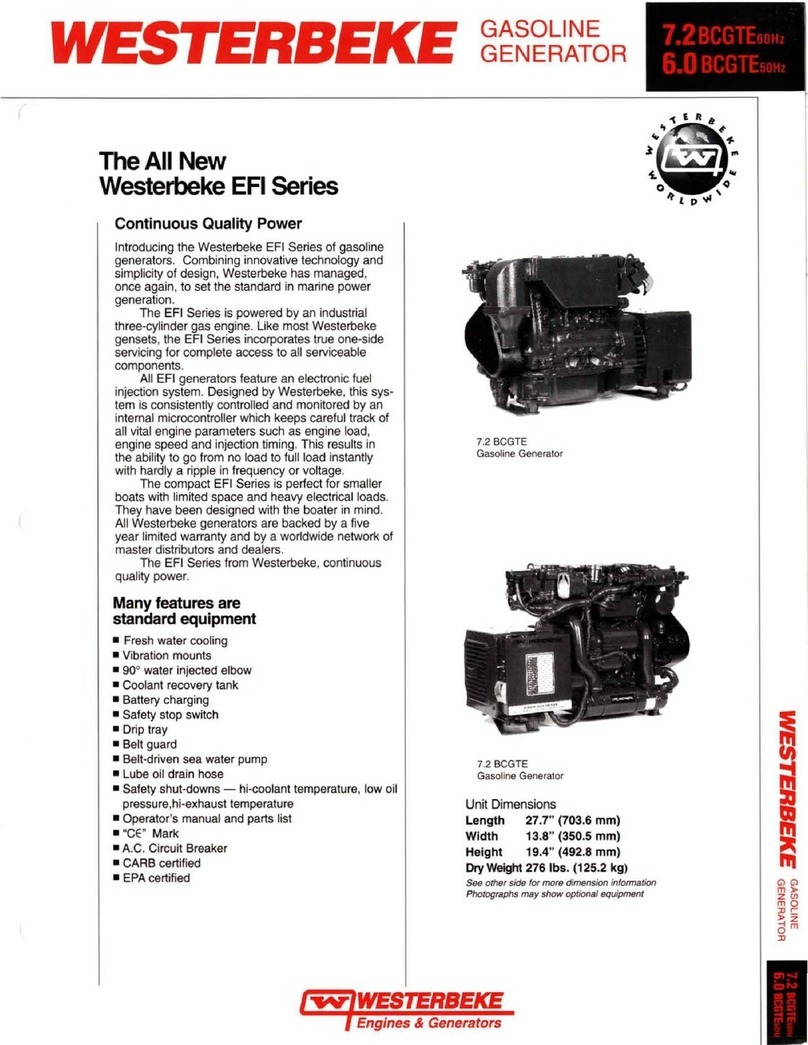
SAFETY
INSTRUCTIONS
ACCIDENTAL
STARTING
A
WARNING:
Accidental
starting
can
cause
injury
or
death!
II
Disconnect the battery cables before servicing the engine!
generator. Remove the negative lead first and reconnect
it last.
II
Make certain all personnel are clear
of
the engine before
starting.
• Make certain all covers, guards, and hatches are
re-installed before starting the engine.
BATTERY
EXPLOSION
A
WARNING:
Battery
explosion
can
cause
injury
or
death!
• Do not smoke
or
allow an open flame near the battery
being serviced. Lead acid batteries
emit
hydrogen, a
highly explosive gas, which can be ignited
by
electrical
arcing or by lit tobacco products.
Shut
off
all electrical
equipment in the vicinity to prevent electrical arcing
during servicing.
11
Never connect the negative(-) battery cable to the
positive (
+) connection terminal
of
the
starter solenoid.
Do not test the battery condition
by
shorting the terminals
together. Sparks could ignite battery gases or fuel vapors.
Ventilate any compartment containing batteries to prevent
accumulation
of
explosive gases. To avoid sparks, do not
disturb the battery charger connections while the battery
is being charged.
llil
Avoid
contacting the terminals with tools, etc., to prevent
bums or sparks that could cause an explosion. Remove
wristwatch, rings, and any otherjewelry before handling
the battery.
II
Always tum the battery charger
off
before disconnecting
the battery connections. Remove the negative lead first
and reconnect it last when servicing the battery.
BATTERY.
ACID
A
WARNING:
Sulfuric
acid
in
batteries
can
cause
severe
injury
or
death!
11
When servicing the battery or checking the electrolyte
level, wear rubber gloves, a rubber apron, and eye
protection. Batteries contain sulfuric acid which is
destructive.
If
it comes in contact with your skin, wash
it off
at
once with water. Acid may splash on the skin or
into the eyes inadvertently when removing electrolyte
caps.
TOXIC
EXHAUST
GASES
A
WARNING:
Carbon
monoxide
(CO)
is
a
deadly
gas!
• Ensure that the exhaust system is adequate to expel gases
discharged from the engine. Check the exhaust system
regularly for leaks
and
make sure the exhaustmanifold/
water-injected elbow is securely attached.
II
Be sure the unit and its surroundings are well ventilated.
_Run blowers when running the
ge11erator
set or engine.
II
Do
not run the generator set
or
engine unless the boat is
equipped with a functioning marine carbon monoxide
detector that complies with ABYC A-24. Consult your
boat builder
or
dealer for installation
of
approved
detectors.
II
For additional information, refer to ABYCTII-22
(educational information on Carbon Monoxide).
A
WARNING:
Carbon
monoxide
(CO)
is
an
invisible
odorless
gas.
Inhalation
produces
flu-like
symptoms,
nausea
or
death!
•
Do
not use copper tubing
in
exhaust systep15. Exhaust
sulfur causes rapid deterioration
of
copper tubing
resulting
in
exhaust/water leakage.
II
Do
not install exhaust outlet where exhaust can be drawn
through portholes, vents,
or
air conditioners.
If
the engine
exhaust discharge outlet is near the waterline. water could
enter the exhaust discharge outlet and close
or
restrict the
flow
of
exhaust. Avoid overloading the craft.
II
Carbon monoxide
gas
is present in exhaust fumes. Some
of
the symptoms
or
signs
of
carbon monoxide inhalation
or
poisoning are:
Vomiting
Dizziness
Throbbing in temples
AVOID
MOVING
PARTS
Muscular twitching
Intense headache
Weakness and sleepiness
A
WARNING:.Rotating
parts
can
cause
InJury
or
death!
11
Do
not service the engine while
it
is running.
If
a
situation arises in
which
it
is absolutely necessary to
make operating adjustments, use extreme care to avoid
touching moving parts
and
hot exhaust system
components.
Engines & Generators
ii
